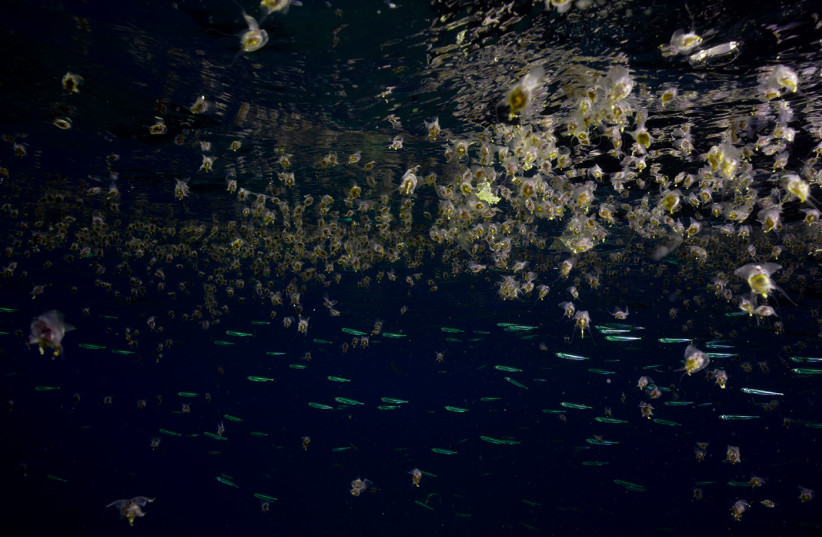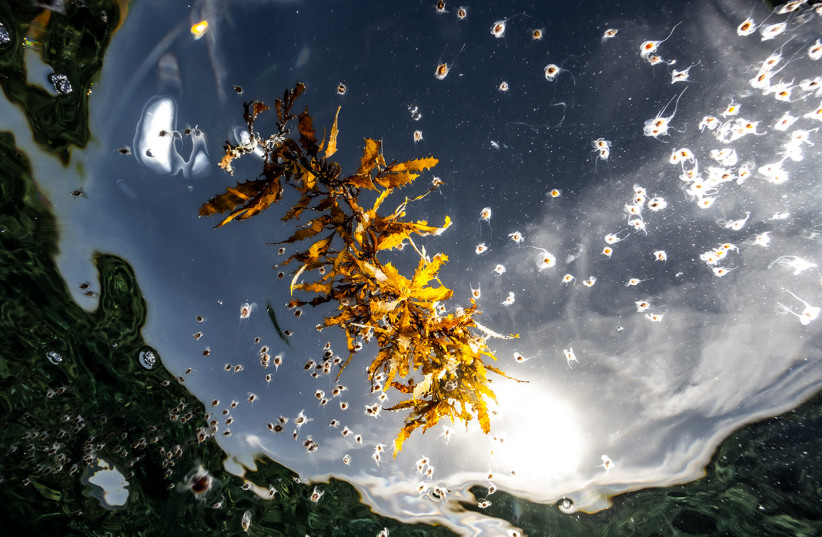Sea butterflies spotted in Eilat for first time in 29 years
Sea butterflies are not known to sting or harm humans.
Thousands of sea butterflies were spotted in the Gulf of Aqaba in Eilat for the first time in 29 years, according to a statement last week by the Israel Parks and Nature Authority.
The last time the sea butterflies were spotted in the Gulf of Aqaba was in 1994.
Sea butterflies are tiny animals, each measuring just about a few millimeters in length. Most sea butterflies are light or transparent due to their calcified shells.
Eilat residents and guests of the city were exposed to the unusual phenomenon last week, many of them for the first time. The creatures were observed by maritime inspector Omri Omessi and confirmed to be sea butterflies.
"It's always fun to see the Bay of Aqaba come to life," Omessi stated. "Swimming in the swarms of butterflies is a wonderful experience.
"You are warmly invited to jump into the cool water and experience an extraordinary experience for yourself. The butterflies are in every corner of the bay," he continued.
Sea butterflies are not known to sting or harm humans.
Biology of the sea butterflies
Dr. Bracha Prestei, from The Inter-University Institute for Marine Sciences in Eilat, stated that "the species Cavolinia uncinata appears in the Gulf of Aqaba mainly in the winter season," which shares the Pteropoda order taxonomic with the sea butterfly.
"These creatures have a pair of butterfly-like fins. In all stages of their development, they live underwater as plankton. Their shell is cone-shaped and fragile," she continued.
"Expanding in the shell, they extend into the water that increase their surface area, which allows it to float and swim actively using their fins.
"It feeds on plants and tiny planktonic animals that are caught in a mucous net where it spreads out into the water and rolls into its mouth."
Prestei also notes that it's not yet clear what has caused the massive wave of sea butterflies appearing in Eilat.
Jerusalem Post Store
`; document.getElementById("linkPremium").innerHTML = cont; var divWithLink = document.getElementById("premium-link"); if (divWithLink !== null && divWithLink !== 'undefined') { divWithLink.style.border = "solid 1px #cb0f3e"; divWithLink.style.textAlign = "center"; divWithLink.style.marginBottom = "15px"; divWithLink.style.marginTop = "15px"; divWithLink.style.width = "100%"; divWithLink.style.backgroundColor = "#122952"; divWithLink.style.color = "#ffffff"; divWithLink.style.lineHeight = "1.5"; } } (function (v, i) { });


